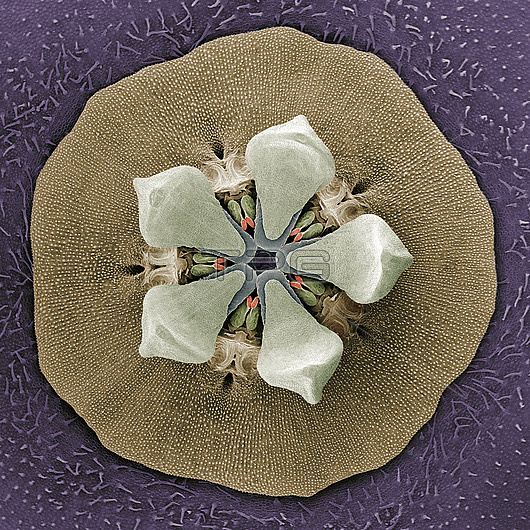
Scanning electron micrograph of a carrion flower of the genus Duvalia. The picture shows the five-fold symmetry of the gynostegium, a complex structure containing nectaries at the base of the (white) corona, pollen masses ( pollinia, red ovals) and stigmas (not visible). The pollinia are attached to a clip mechanism, the translator. The rotten meat odour of the nectar attracts blow flies. The translator attaches itself to the legs of the fly, which then visits a second flower. The pollinia are shed into tunnels leading to the stigma (five dark entrances beyond the pollinia here), resulting in cross-pollination. Carrion flowers are members of the Asclepiadaceae, a family rivalling orchids in the complexity of adaptations to pollinators. Details of floral structure vary between genera and species, and are studied as a model of adaptation in evolutionary theory. Mag x 10 at 8x8
| px | px | dpi | = | cm | x | cm | = | MB |
Details
Creative#:
TOP26387139
Source:
達志影像
Authorization Type:
RM
Release Information:
須由TPG 完整授權
Model Release:
N/A
Property Release:
N/A
Right to Privacy:
No
Same folder images:

 Loading
Loading